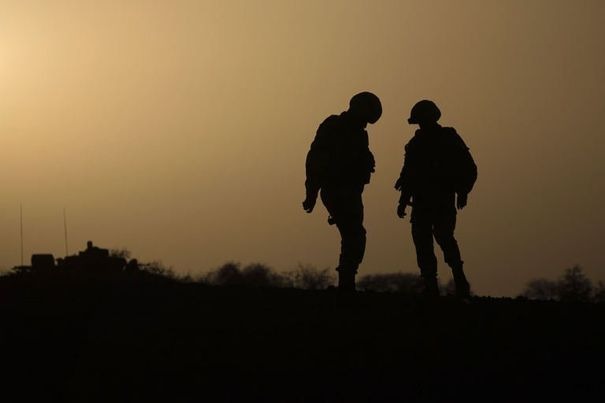
‘Most modern armed forces equip their personnel with the latest body armour, the best protected vehicles, and the most sophisticated counter explosive electronics, acquiring as well the most advanced medical services for those physically wounded or maimed. Much less time is devoted to providing military personnel with existential or inner armaments with the mental armour and philosophical protection that is necessary to confront an asymmetric enemy who abides by a different set of cultural rules.’ Michael Evans, Captains of the Soul (2010)
In a military landscape that sees equipment advancements at a rate never experienced before, the question of ‘can it be done?’ has now been replaced with ‘how far can we go?’. The parameters of our technological advancements are limitless and now more than ever, the ADF is reaching down into the organisation to encourage the contribution of its members to volunteer innovations and ideas to enhance military capability.
However, even with the latest equipment, technology and training, a military force can only ever be as effective as its soldiers. Under every soldier combat ensemble is a unique individual who navigates their own challenges and competing life demands with a range of strategies as vast and varied as the number of people who serve. While the ADF has invested significantly into its provision of mental health services and is actively promoting a culture in which seeking help is encouraged, a history of stigmatisation and a lack of understanding of the perceived ramifications continues to act as a barrier. While barriers to seeking treatment can be as diverse as the people affected, the most common causes within the ADF are: reduced deployability (36.9%), a fear of being treated differently (27.6%), and a perceived potential to harm their career (26.9%) (ADF Mental Health Prevalence and Wellbeing Study, 2010).
In Australia, mental illness is the third leading cause of disability (World Health Organisation, 2018) and it accounts for nearly one-third of the time lost to disability each year (Australian Bureau of Statistics, 2016). Although research has shown that the proportion of sufferers in the ADF is the same as the civilian percentage affected, the unique demands of military service pose their own challenges on the organisations’ collective mental health. In addition, given that the prevalence of mental health conditions is greatest between the ages of 15-39 and decreases with age (ADF Mental Health Prevalence and Wellbeing Study, 2010), the demographic of the ADF reflects a particularly at risk category.
To this end, breaking down these barriers is a pursuit that has the potential to affect every member of the armed forces as well as the wider Defence and civilian community. Mental health awareness is a force multiplier. If statistically speaking, 45% of serving members will be affected by mental illness at some stage in their lives then it falls on the shoulders of the 55% fortunate enough not to be immediately affected to help reduce the burden on those that do.
By focusing on realistic and relatable training and professional military education opportunities in which rehabilitated sufferers can share their stories, soldiers at all levels will have the opportunity to query the common misconceptions surrounding ramifications for seeking assistance. Furthermore, by providing transparent information on the reporting requirements for mental health treatment, self-referral and early intervention is likely to be improved. And lastly, by acknowledging that stigmas surrounding mental health do exist and that the only way the ADF can collectively break down these barriers is through education, respect and open conversation, then perhaps it won’t be too long before the mental health battles facing our soldiers are no longer challenges that need be accepted.
VVCS: 1800 011 046 | Lifeline: 131 114 | Beyondblue: 1300 224 636
About the author
Steph Palfrey-Sneddon is a medical corps officer currently posted to Townsville where she works as the platoon commander to the Brigade Support Platoon. She is passionate about mental health related issues in the ADF and in her free time also enjoys going to the gym and baking. She lives with her husband Harry, who is fortunately very good at cleaning the kitchen.
References
Australian Bureau of Statistics. (2016). Causes of Death, Australia 2015, preliminary data., Cat. no. (3303.0). Canberra: ABS.
Evans, Michael (2011) “Captains of the Soul,” Naval War College Review: Vol. 64 : No. 1 , Article 4. [online] Available at:
Available at: http://digital-commons.usnwc.edu/nwc-review/vol64/iss1/4
E. Hodson, A. C. McFarlane, M. Van Hooff & C. Davies. (2011). Mental Health in the Australian Defence Force – 2010 ADF Mental Health Prevalence and Wellbeing Study: Executive Report, Department of Defence: Canberra.
World Health Organization. (2018). Mental disorders. [online] Available at: http://www.who.int/mediacentre/factsheets/fs396/en/ [Accessed 18 Apr. 2018].

